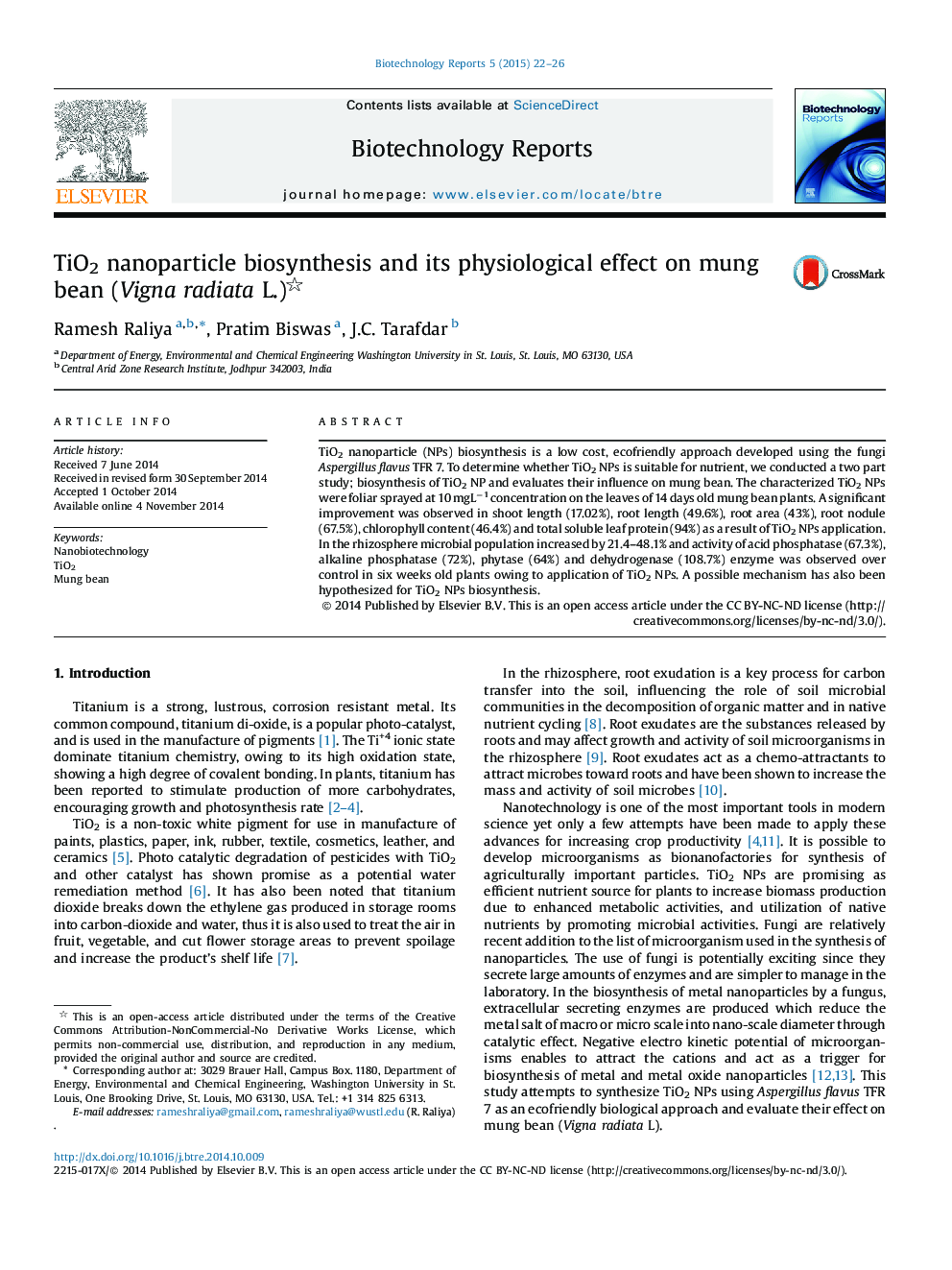| Article ID | Journal | Published Year | Pages | File Type |
|---|---|---|---|---|
| 870650 | Biotechnology Reports | 2015 | 5 Pages |
TiO2 nanoparticle (NPs) biosynthesis is a low cost, ecofriendly approach developed using the fungi Aspergillus flavus TFR 7. To determine whether TiO2 NPs is suitable for nutrient, we conducted a two part study; biosynthesis of TiO2 NP and evaluates their influence on mung bean. The characterized TiO2 NPs were foliar sprayed at 10 mgL−1 concentration on the leaves of 14 days old mung bean plants. A significant improvement was observed in shoot length (17.02%), root length (49.6%), root area (43%), root nodule (67.5%), chlorophyll content (46.4%) and total soluble leaf protein (94%) as a result of TiO2 NPs application. In the rhizosphere microbial population increased by 21.4–48.1% and activity of acid phosphatase (67.3%), alkaline phosphatase (72%), phytase (64%) and dehydrogenase (108.7%) enzyme was observed over control in six weeks old plants owing to application of TiO2 NPs. A possible mechanism has also been hypothesized for TiO2 NPs biosynthesis.
